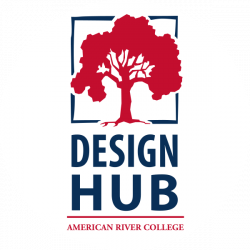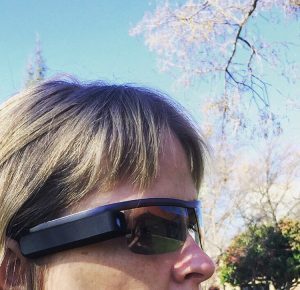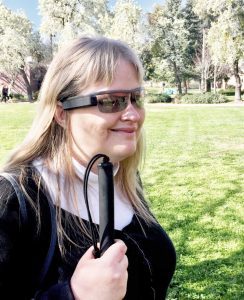American River College’s Spanish 361 class, led by Professor Currea, is about learning and applying the student’s knowledge of Spanish through conversation. Rather than just studying and learning phrases, Professor Currea challenges her students to learn a new skill all while speaking Spanish. The class attended the Kaneko art gallery- American River College’s art gallery on campus that houses all of our student artwork. They observed and conversed in Spanish about their thoughts and impressions of the artist’s work. Afterwards, each student was asked to choose a word that best described what they felt or took away from the experience. This past week, the new skill that the class was taught in Spanish was how to prepare their chosen Spanish word from the art experience for laser etching. The students were each asked to pick a word that represented all of the emotions, experiences, and thoughts about the artist’s work, and how that could be generated and laser etched by the Design Hub. This project then given back to the artist, bringing the experience full circle as the students show their appreciation through their application of the Spanish language.

On Thursday, February 22nd, the class was brought into the Design Hub, where Sean gave a tour of where lab and a demonstration of how the 3D printer works so the students could see all that the Design Hub has to offer.
During this visit, we had the opportunity to conduct some quick interviews with some of these students.

One of them was Peter Brixie, their word: Hermosa. Peter has greatly enjoyed Professor Correia’s class. The most helpful part about having to constantly converse with others in Spanish is that it helps make speaking in Spanish second nature. For Peter, thinking about the translation between English and Spanish all in his head was the most challenging task for him. Having the class focus more on conversing has been greatly beneficial and fun for Peter learning Spanish. His word that he chose to add to the word cloud was “hermosa”, meaning “beautiful”.

Another student, Theresa Pavale had the word “la vida”. Theresa told us she is studying to be a nurse practitioner in the trauma center, and was really impressed when Randy showed how the Design Hub is able to 3D print bones and anatomical models for her department. She was also impressed by the amount of resources that the Design Hub would be able to provide students like her with. The word that she chose was “la vida”, meaning “life”. She was very taken with the painting titled, “Water of Life” and the meaning of the painting: that if there is life, there will be water and how you cannot have one without the other.
It was great to hear from these students and to get the opportunity to introduce them to our Design Hub community. As well as hearing how they applied the Spanish language to art, it serves as an example that being able to use different ways to communicate about things can be a force to broaden our understanding and perspective on the world.
We appreciate Professor Currea and the wonderful Spanish 361 class for visiting, and allowing us to share our beloved corner of campus.






